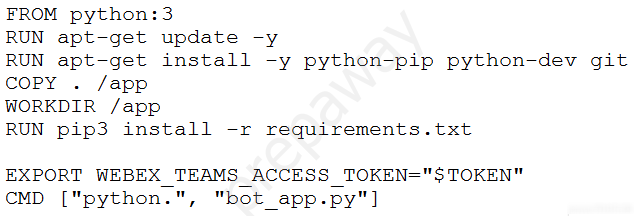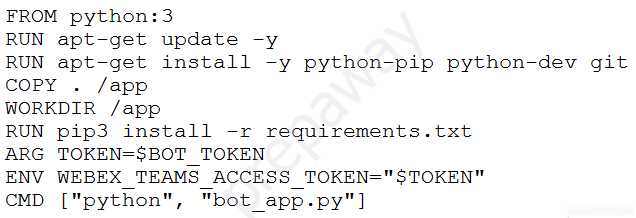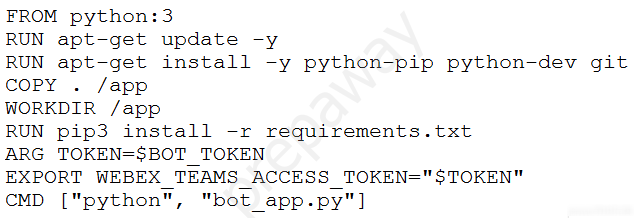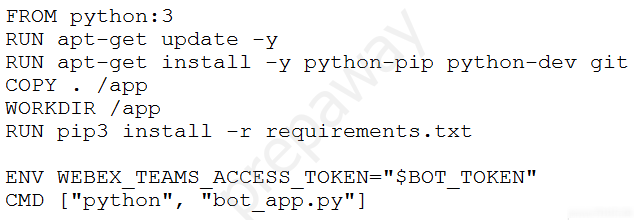The access token for a Webex bot has been stored in an environment variable using the command: export bot_token=6bec40cf957de397561557a4fac9ea0
The developer now wants to containerize the Python application which will interact with the bot, and will use this build command to add the token to the build image: docker build --build-arg BOT_TOKEN=$bot_token
Which Dockerfile should be used to build the Docker image so that the bot access token is available as an environment variable?
A.

B.

C.

D.
